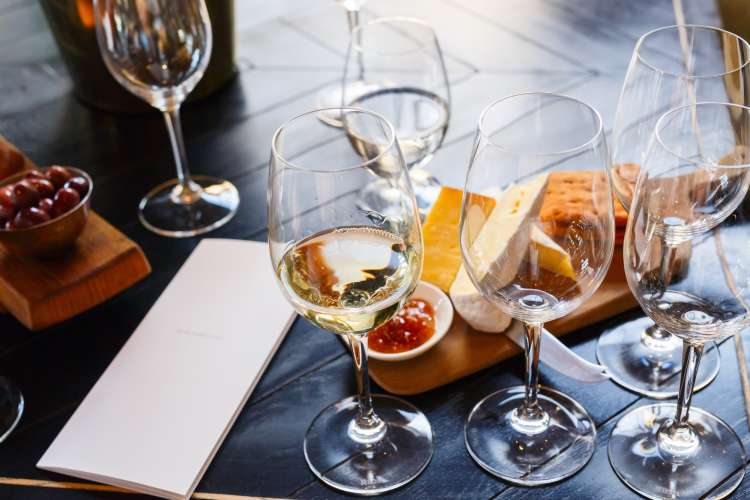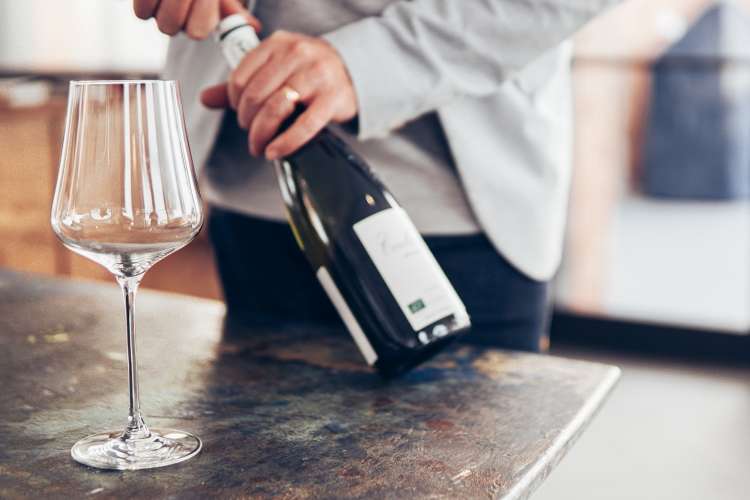How to Take Wine Tasting Notes Like a Sommelier

If you are a wine enthusiast interested in expanding your vino knowledge, learning to write better wine tasting notes is a critical first step. Wine tasting is more than just how sweet, dry, fruity or acidic a wine is. It’s about the viscosity of the wine, the underlying aromas and the way that it feels on your tongue.
There are a variety of different characteristics to identify when wine tasting, and notes are the best way to keep track of them. The more you practice your wine tasting notes, the better you will get at identifying wines and understanding each one's description.
But where does a novice wine lover begin? If you want to taste wine with the awareness and understanding of a sommelier, follow these tips for taking great wine tasting notes.
Jump to Section
- Why Take Wine Tasting Notes?
- Wine Tasting Characteristics
- Wine Tasting Aromas
- Words to Describe Wine
Why Take Wine Tasting Notes?
When sampling different types of wine, it’s easy to forget the specific characteristics of each. Wine tasting notes are a great way to keep track of which wines you prefer and the subtle tastes, colors, consistencies or smells that differentiate them all. They also improve your ability to read wine ratings, descriptions and reviews, therefore improving your ability to buy a great bottle off the shelf, or easily remember your favorite selections from an event like a virtual wine tasting.

Wine Tasting Characteristics
If you’re looking for the right words to describe a wine, here’s a tip. All wine can be assessed by the following five characteristics: sweetness, acidity, tannin, alcohol and body. Sweetness is something we all should be able to identify. Acidity, on the other hand, is slightly trickier. It’s characterised by a zesty tartness that may cause tingling on the tongue.
Tannins can be identified by a slight bitterness as well as how dry they leave your tongue after taking a sip. The drier it is, the more tannins there are in the wine. High alcohol content wines tend to taste bold and slightly oily like a spirit while lighter wines are lighter on the palate.
Finally, body describes how light or heavy a wine feels in the mouth. It’s one of the most common terms used when taking wine tasting notes.

Wine Tasting Aromas
Before you taste a wine or take any wine tasting notes, you should always smell it. Smell plays a crucial part in how we experience food and drink, according to biologists at Arizona State University. The nose picks up many more unique flavors and aromas than the tongue, helping tasters more easily identify a wine and pick up on its nuances.
That said, each wine has different aromas to look out for, from pleasant fruity aromas (sometimes called a wine bouquet) to scents of yeast to earthy notes. Here’s how to break them down.
Primary Aromas
Primary wine aromas are aromas that come from the grapes themselves, which is why they tend to be more apparent in younger wines. They include scents of fruit, flowers like rose and violet, and spices or herbs like ginger or mint.
Secondary Aromas
Secondary aromas occur during fermentation and sometimes through wood barrel aging. These aromas are often described as yeasty, nutty, spicy or even buttery. Minimal intervention wines tend to have fewer secondary aromas.
Tertiary Aromas
Tertiary aromas are scents that arise during the aging process and typically develop after the wine has been bottled. They are often compared to leather, truffle, tobacco, cedar, mushroom and other earthy products.

Words to Describe Wine
What does red wine taste like? What does white wine taste like? Learning how to describe wine is easier than it seems. Wine can be described in so many different ways, but when taking wine tasting notes, it’s helpful to be aware of the most commonly used terms.
From acidity to dryness to fruitiness, there are so many words to describe wine. Here are a few of the most common to keep in mind while you jot down wine notes.
Acidic
As mentioned above, acidic refers to a wine’s tartness. When taking wine tasting notes, mention the acidity if a wine is distinctively sour or sharp and provides a slight tingle on the tongue.
Dry
Dry wines are wines with little residual sugar after they have been fermented and aged. If a wine is not overly sweet, dry is typically an appropriate way to describe it. However, wines that are dry on the tongue are not necessarily indicative of a dry wine.
Earthy
Wines that are rich in tertiary aromas like tobacco or mushrooms can be described as earthy. When taking wine tasting notes, you can also look for a dryness on the tongue and lack of fruitiness to identify an earthy wine.

Fruity
Fruity wines obviously have strong fruit flavors, but these flavors can vary from melon to berry to apple to dried fruit depending on aroma, sweetness and acidity. Smell the wine before tasting it to pick up on the full fruit spectrum.
Smooth
When taking wine tasting notes, smoothness should be a key characteristic. Smooth wines are typically low in acidity and tannins and sometimes high in sugar, making them very easy to drink. They are also literally smooth in the mouth as the taste does not tend to linger as much as a bolder wine.
Woody
When wine has been aged in wooden barrels, it develops woody smells and flavors. Woody wine tends to be smoky and sometimes even tastes like toast with underlying notes of oak. They can also give off a nutty flavor or aroma depending on the type of wood used.
Sweet
The sweetness of a wine is one of the easiest factors to identify when taking wine tasting notes. It describes the sugar content of a wine and is higher in wines that have been fermented for less time. It can also be predicted by the style and grape varieties, as whites and fortified wines tend to be sweeter than reds and sparkling wines.

If you want to develop your wine identification skills, read wine reviews with ease and pick up on the underlying flavors and aromas of your favorite bottles, taking notes is a great way to enhance your understanding.
If you are planning a wine tasting experience in the near future, keep these tips in mind. They will help you take professional wine tasting notes just as well as a sommelier.
For even more insight into wine tastings, check out other experiences happening on Cozymeal.




FOOD FOR THOUGHT?
Join the conversation.